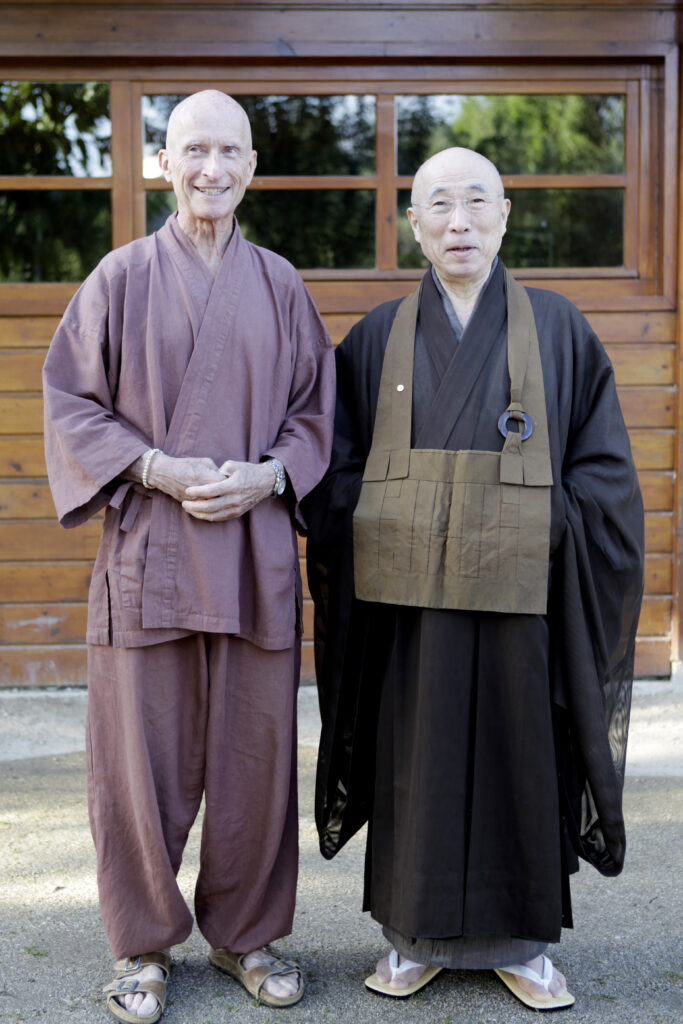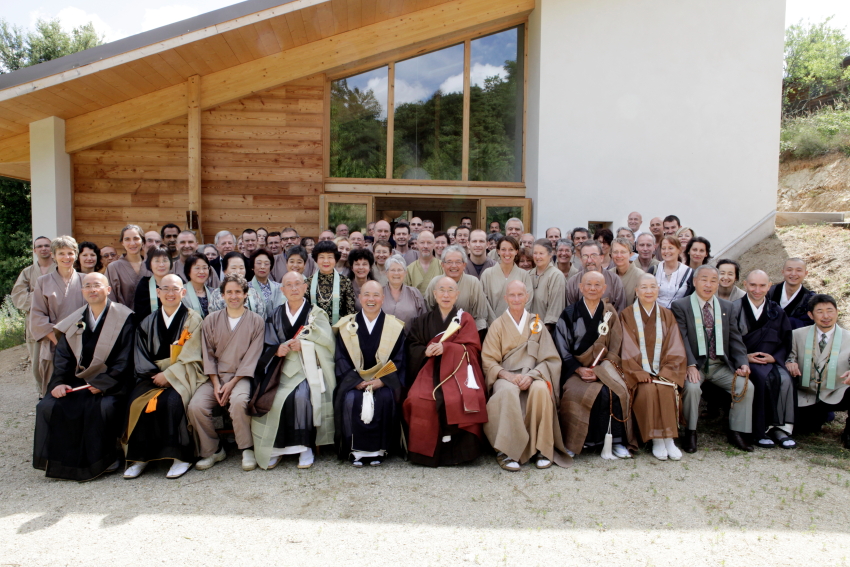The Falaise Verte Zen Centre was founded in 1974 by Taikan Jyoji when he returned from Japan, after spending seven years at the Shōfuku-ji monastery under the aegis of Yamada Mumon Rōshi. Initially established in Vesseaux, near Aubenas, in 1987 the Centre moved to Saint-Laurent-du-Pape, in the Ardèche region.
Excerpt of the speech made by Taikan Jyoji during the official ceremony of consecration of the zendō, on 13 June 2010.

As I like to talk, I’ll be brief!
It all started in 1985, in the Kōrakuen garden in Okayama with a group of students. We were out for a stroll and I said to Gérard: “It would be great to create our own Centre”.
I mentioned the project to Taitsū Rōshi and he was all for it. Then the hard work began: to gather together the necessary energy and money and buy some land. Taitsū Rōshi was the first to make a generous donation at that moment.
The project concerned the construction of two main buildings, a dojo and a zendō, starting with the dojo because you can do zazen in a dojo but you can’t do other activities in a zendō. And since we only had money for one building, we built the dojo.
Thus the first European Rinzai Zen temple was created.
Several years later, when Taitsū Rōshi was visiting, he made the following comment: “And what about the zendō?” because he’d given us money for a zendō, not for a dojo! So I said: “Right, we’ll do it” and then I asked myself: “where do we start?”.
We met up in Paris. There was Gérard, Ivan, Daniel, Anne-Dauphine, one or two others, and someone from Switzerland whom I’d asked to come, all Zen practitioners at the Falaise Verte. It’s always useful to have a Swiss person present for financial questions. At one point he asked how much money we would need. I replied: “a million Euros” and he said: “I can find that amount!”. In reality, he didn’t provide a single centime but he gave us hope.
As you know, you don’t do zazen without taku. So we started making taku and we built the zendō around them! It was as simple as that. In other words, we put the cart before the horse! I’ve always succeeded by doing it that way round.
Taitsū Rōshi and I go back a long way because when Mumon Rōshi died I continued to do sanzen with Taitsū Rōshi. Not only do I view him as my Master, but we also developed a long friendship. I would like to thank him from the bottom of my heart for coming regularly to the Falaise Verte, particularly this year with a delegation of eighteen people: temple masters, lay practitioners, friends. It’s a great honour. And I would like to thank all those who have supported us morally and materially, especially those who helped us materially…
An extraordinary thing happened to Taitsū Rōshi on the first of April (no April Fools’…). He was appointed kanchō at Myōshin-ji. You could say “cardinal” of the three thousand or more temples attached to the head temple. In the meantime, my friend Matsui Soeki also became General Secretary of Myōshin-ji. So we have here with us today numbers one and two of Myōshin-ji.
That wasn’t too long, but fortunately I don’t like talking, so I’ll stop there!
Ah! While I’m here, I’ll share my latest teaching with you; always remember the proverb which definitively replaces the previous one: “To successfully carry through a project, put the cart before the horse!”.
